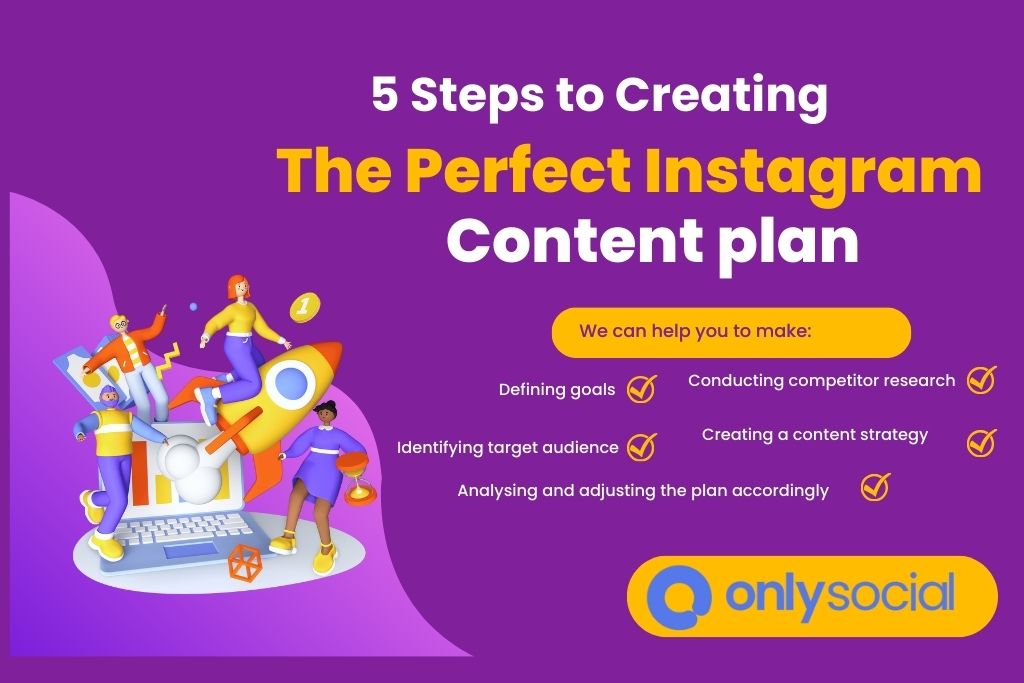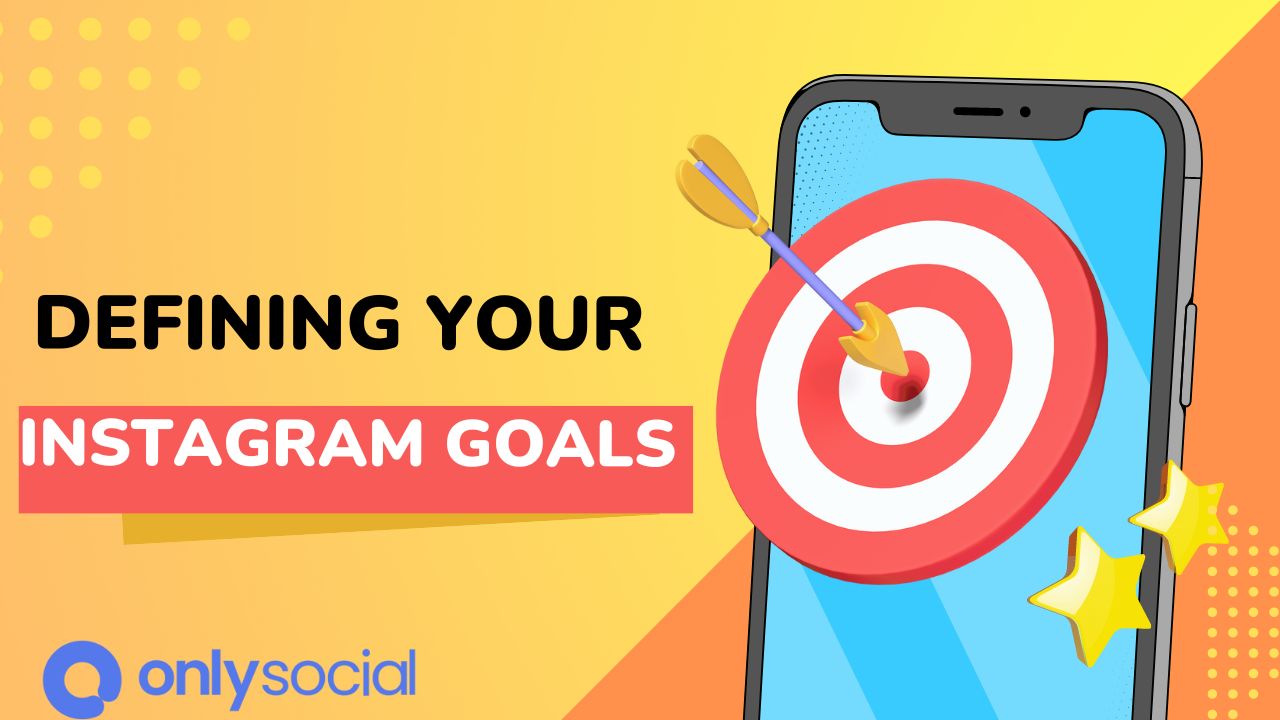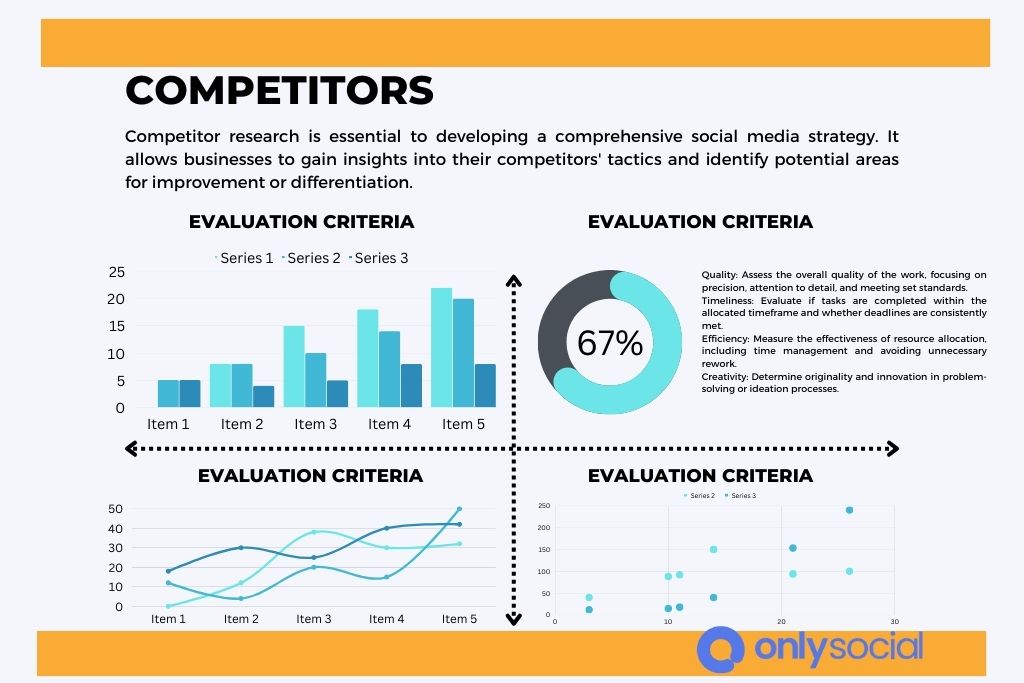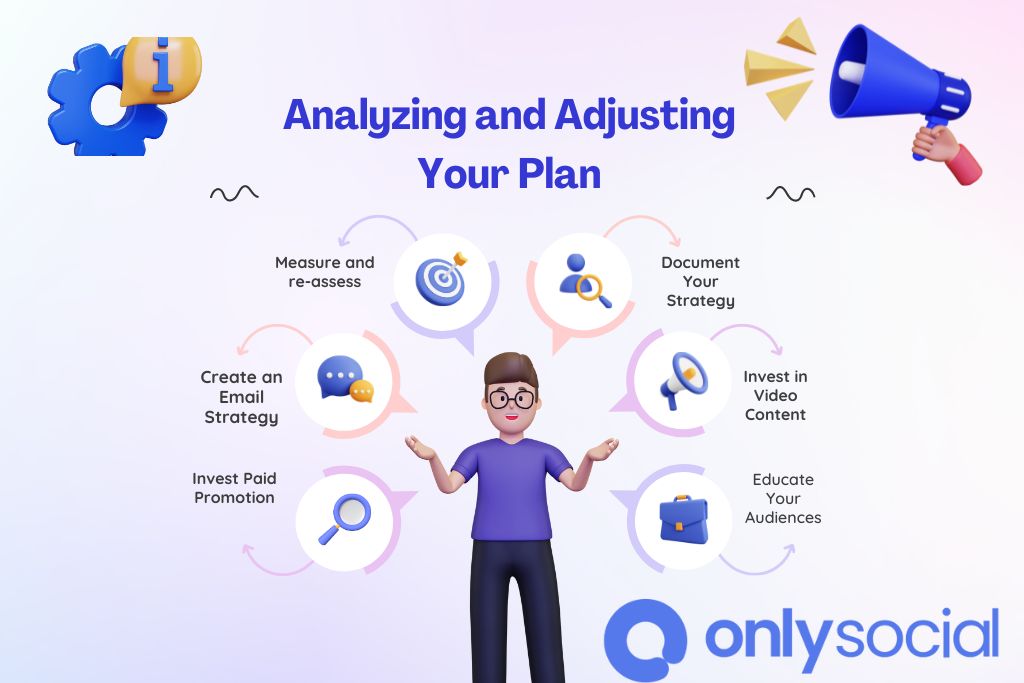5 Steps to Creating The Perfect Instagram Content Plan

5 Steps to Creating The Perfect Instagram Content Plan
In social media, Instagram has emerged as a prominent platform for individuals and businesses to showcase their content and engage with audiences. An effective Instagram content plan requires a strategic approach encompassing various steps. This article aims to provide a comprehensive guide to creating such a plan by utilising five essential steps:
- Defining goals: Defining your goals before creating content on Instagram is crucial. Whether you aim to increase brand awareness, drive website traffic, or boost sales, setting specific and measurable goals will provide a clear direction for your content plan.
- Identifying target audience: Understanding your target audience is fundamental in creating content that resonates with them. Conduct thorough research to identify their demographics, interests, and preferences. This knowledge will help tailor your content to their needs and preferences, strengthening your connection.
- Conducting competitor research: Analysing your competitors’ strategies can provide valuable insights and inspiration for your content plan. Identify successful accounts in your niche and study their content, engagement techniques, and overall brand identity. By learning from competitors, you can differentiate yourself and offer unique value to your audience.
- Creating a content strategy: After gathering essential information, it’s time to develop a content strategy. Determine the types of content you will share, such as photos, videos, or stories. Plan a content calendar to ensure consistency and vary your content to keep your audience engaged. Incorporate compelling captions and relevant hashtags to increase visibility and encourage interaction.
- Analysing and adjusting the plan accordingly: Regularly analyse your Instagram metrics to evaluate the success of your content plan. Monitor key metrics like engagement rate, follower growth, and website clicks. Use this data to adjust your strategy accordingly, improving and refining your approach to achieve optimal results.
By following these steps, you can optimise your presence on Instagram and maximise your impact within this digital landscape. Start crafting your Instagram content plan today and watch your audience grow!
Table of Contents
- 1 Defining Your Instagram Goals
- 2 Identifying Your Target Audience
- 3 Conducting Competitor Research
- 4 Creating a Content Strategy
- 5 Analysing and Adjusting Your Plan
- 6 BONUS
- 7 Frequently Asked Questions
- 7.1 How Often Should I Post on Instagram to Maintain Engagement With My Audience?
- 7.2 What Is the Best Time of Day to Post on Instagram for Maximum Reach?
- 7.3 How Can I Effectively Use Hashtags to Increase the Visibility of My Content?
- 7.4 Are Any Specific Tools or Apps That Can Help Scheduling and Managing Instagram Content?
- 7.5 How Can I Measure the Success of My Instagram Content Plan and Track the Growth of My Audience?
Defining Your Instagram Goals
Defining Instagram goals involves establishing clear objectives for the content plan. Setting objectives is crucial in creating an effective Instagram strategy as it provides direction and focus to the content creation process. To begin, it is essential to identify what you hope to achieve through your Instagram presence. This could include increasing brand awareness, driving website traffic, generating leads, or engaging with your audience. By clearly defining these goals, you can tailor your content plan accordingly.
Once the objectives are set, it becomes easier to measure and evaluate the success of your Instagram efforts. Measuring success involves tracking key metrics such as follower growth, engagement rate, reach, and conversions. These metrics provide valuable insights into how well your content resonates with your target audience and whether you meet your objectives.
Additionally, setting objectives allows for strategic decision-making when selecting content themes and formats. For example, if one of your goals is to increase brand awareness, you may focus on visually appealing posts that showcase your products or services in action.
Identifying Your Target Audience
Identifying the target audience is crucial to developing an effective social media strategy. Understanding demographics and engaging followers are key to ensuring your content resonates with your intended audience.
Here are three important steps to help you identify your target audience:
- Conduct thorough market research: Gather information about your potential followers, such as their age, gender, location, interests, and online behaviours. This data will provide valuable insights into their preferences and habits.
- Analyse social media analytics: Utilise the built-in analytics tools provided by social media platforms to understand better who is already engaging with your content. Monitor metrics like follower demographics, engagement rates, and popular content types.
- Create buyer personas: Based on the information gathered from market research and analytics, develop detailed profiles of your ideal followers or customers. These buyer personas should include demographic and psychographic details like motivations and pain points.
Conducting Competitor Research
Competitor research is essential to developing a comprehensive social media strategy. It allows businesses to gain insights into their competitors’ tactics and identify potential areas for improvement or differentiation.
Competitor analysis involves analysing the strengths and weaknesses of your competitor’s social media presence. This includes examining their content strategies, engagement levels, and audience demographics. This information can be used to benchmark your performance against that of your competitors and identify opportunities for optimisation.
One effective strategy for conducting competitor research is to monitor their social media accounts closely. This includes reviewing their posts, monitoring engagement metrics such as likes, comments, and shares, and analysing the types of content they are posting. By identifying which posts generate the most engagement from their audience, you can gain valuable insights into what resonates with your target market.
Another important aspect of competitor research is benchmarking. Benchmarking involves comparing your social media performance against industry standards or best practices. By understanding how your competitors perform in reach, engagement, and follower growth rate, you can set realistic goals for your social media strategy.
Creating a Content Strategy
One crucial aspect of developing an effective social media strategy involves strategically curating and delivering content that aligns with the target audience’s preferences and interests. Creating a content strategy is essential for businesses looking to establish a strong online presence and engage their followers on platforms like Instagram.
To do this successfully, here are three key steps to consider:
- Develop a Content Calendar: A well-planned content calendar helps ensure consistency in posting and provides a roadmap for creating relevant and engaging content. It allows businesses to organise their posts, schedule them in advance, and maintain a consistent brand image.
- Identify Key Themes or Topics: Understanding what resonates with your target audience is essential for crafting compelling content. Researching trending topics within your industry can help generate ideas for posts that will capture your followers’ attention.
- Implement an Engagement Strategy: Engaging with your audience is crucial for building relationships and increasing brand loyalty. Responding promptly to comments, asking questions in captions, and running contests or giveaways are effective ways to encourage interaction.
Analysing and Adjusting Your Plan
To optimise the effectiveness of a social media strategy, it is necessary to regularly analyse and make adjustments to ensure that the content resonates with the target audience and meets their preferences and interests. Measuring success and tracking engagement are crucial components in this process.
Measuring success involves evaluating the performance of your social media posts, such as likes, comments, shares, and click-through rates. By analysing these metrics, you can determine which types of content receive the most engagement and resonate with your audience. This data can help you refine your strategy by focusing on what works best.
Tracking engagement goes beyond just looking at quantitative metrics; it also involves understanding how users interact with your content. Are they leaving thoughtful comments or asking questions? Do they share your posts with their networks? Paying attention to these qualitative aspects allows you to gauge the level of interest and connection your audience has with your brand.
Once you have collected this data, it is important to adjust accordingly. This may involve experimenting with different types of content or tweaking existing posts based on feedback from your audience. By continuously analysing and adjusting your plan, you can ensure that your social media strategy remains relevant and effective in engaging with your target audience.
BONUS
Crafting the perfect Instagram content plan is essential for social media success. OnlySocial’s Post Planning and Scheduling function is here to simplify the process. Seamlessly plan and schedule your posts across all social networks, ensuring consistent and strategic content delivery. With unlimited posting and the ability to manage unlimited social profiles, OnlySocial provides the tools to take your Instagram presence to new heights. Start your commitment-free 7-day trial today.
Frequently Asked Questions
How Often Should I Post on Instagram to Maintain Engagement With My Audience?
Optimal posting frequency on Instagram for maintaining audience engagement depends on various factors, such as target audience demographics and content quality. Research suggests a consistent schedule with high-quality posts is important, although specific guidelines may vary for different accounts.
What Is the Best Time of Day to Post on Instagram for Maximum Reach?
Determining the best time to post on Instagram for maximum reach requires strategic planning. By analysing audience demographics engagement data and utilising scheduling tools, content creators can optimise their posting schedule and increase their visibility on the platform.
How can the use of trending hashtags effectively increase the visibility of content on Instagram? How can engaging with followers through hashtags contribute to a strategic and creative approach to content planning?
Are Any Specific Tools or Apps That Can Help Scheduling and Managing Instagram Content?
Various Instagram scheduling tools and content management apps are available to aid in organising and planning Instagram content. These tools offer features such as scheduling posts, managing multiple accounts, analysing performance metrics, and optimising content strategy.
How Can I Measure the Success of My Instagram Content Plan and Track the Growth of My Audience?
Measuring the success of an Instagram content plan and tracking audience growth can be achieved through various metrics such as engagement rates, follower count, reach, impressions, and conversions. These measurements provide insights into the plan’s effectiveness and impact on audience growth.


